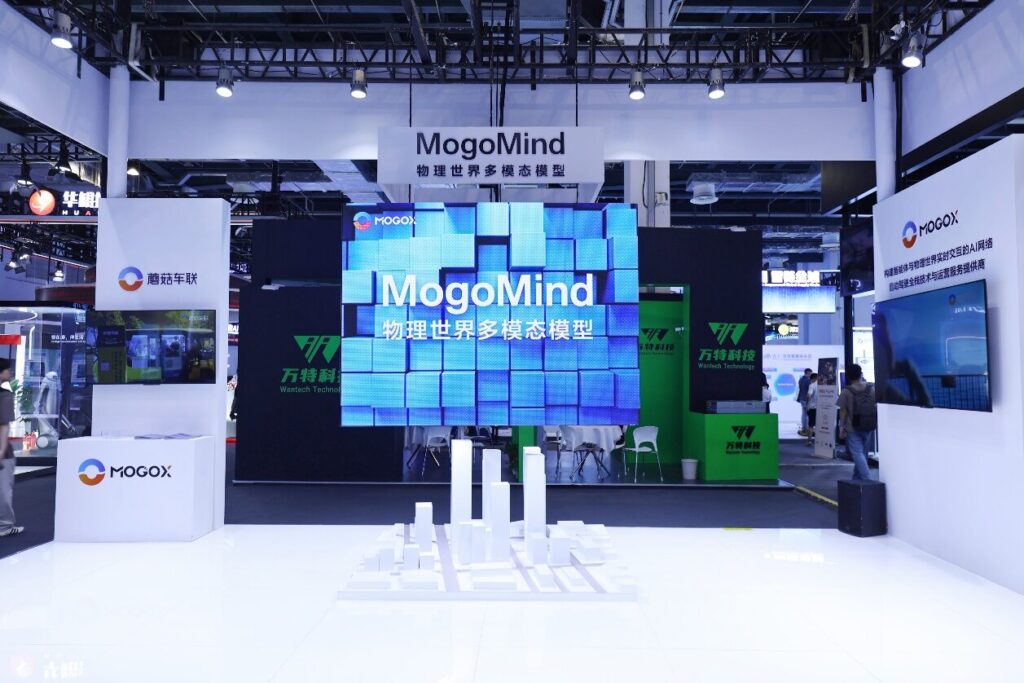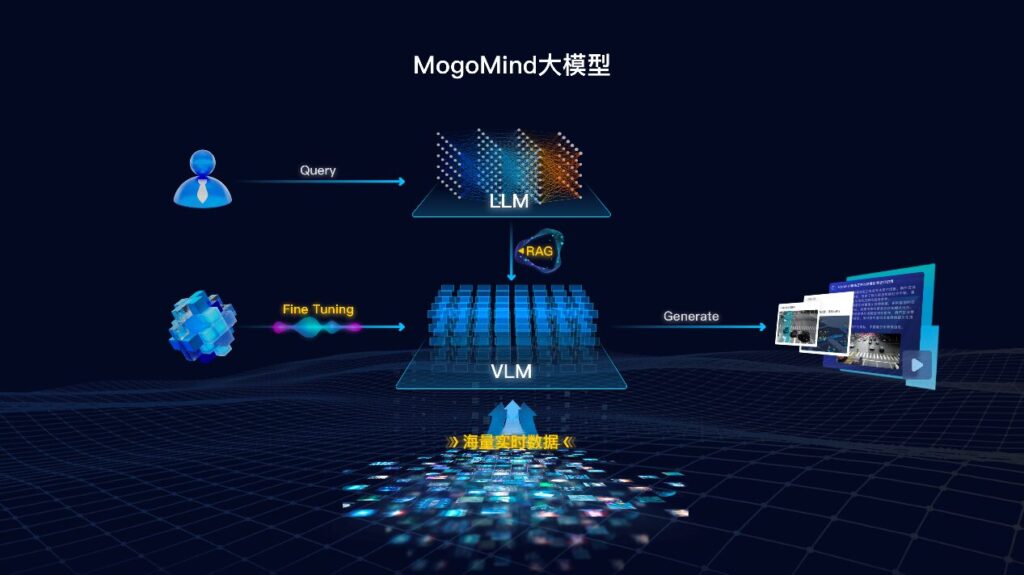MogoAuto MogoMind’s Shocking Debut: The Secret Behind China’s V2X Strategy to Challenge Tesla FSD

At the World AI Conference (WAIC) 2025 in Shanghai, one technology stood out to automotive industry analysts: MogoAuto MogoMind. On the surface, it might look like just another AI model for autonomous driving. But beneath the surface lies a colossal national strategy fundamentally different from the vision-only approach championed by Tesla.
Today, we’ll dissect why MogoAuto MogoMind is not merely a piece of technology, but clear evidence of how China intends to rewrite the rules of the autonomous driving game. Will Tesla’s approach, which relies solely on the vehicle’s brain, prevail? Or is the future in China’s model, where the entire city acts as a single, coordinated organism?
The Two Paths of Global Autonomous Driving: The Lone Genius vs. The Cooperative Society
Before we dive in, it’s crucial to understand the two core philosophies in autonomous vehicle development today:
- The Vehicle-Centric Approach: Tesla is the prime example. The vehicle relies exclusively on its own onboard sensors—cameras, radar, etc.—and a powerful AI processor to perceive and navigate the world. Its major advantage is scalability; sell a car, and it can (theoretically) work anywhere.
- The Infrastructure-Cooperative (V2X) Approach: This is the path China is pursuing at a national level. The vehicle doesn’t just rely on its own senses; it communicates in real-time with infrastructure like traffic lights, roadside sensors, and cameras (V2X: Vehicle-to-Everything).
In this macro context, MogoAuto MogoMind represents the latest evolution of the V2X approach.
What is MogoMind: A “Real-Time Search Engine for the Physical World”
MogoAuto defines MogoMind as a “real-time search engine for the physical world.” This goes beyond recognizing objects on the road; it aims to collect, comprehend, and predict data from the entire urban traffic network in real time.
According to MogoAuto’s announcement, MogoMind’s key capabilities include:
- Real-time Global Perception: It sees beyond a single vehicle’s line of sight, understanding city-wide traffic flow, pedestrian movements, and potential hazards via road infrastructure.
- Real-time Cognitive Understanding: It translates raw data into actionable insights, like “a pedestrian is likely to cross at the next intersection in 10 seconds” or “an accident 2km ahead is causing congestion; reroute now.”
- Real-time Digital Twin: It creates a virtual replica of the real-world traffic environment to run simulations and determine optimal control strategies.
This is the critical difference from Tesla’s FSD. No matter how advanced FSD becomes, it cannot see a hidden car over a hill or an accident beyond its camera’s range. MogoMind, however, can receive that information from the infrastructure and feed it to the vehicle. This approach is only possible due to strong, state-led policies like China’s Guideline on National Smart City Construction.

Opportunities and Risks: The Two Sides of China’s V2X Strategy
So, is China’s “vehicle-infrastructure cooperation” strategy flawless? A recent report from market research firm Canalys notes that V2X can dramatically improve safety under the right conditions, but also points out significant challenges.
Opportunities:
- Superior Safety: By providing information beyond the limits of a driver’s sight or vehicle sensors, it can dramatically improve responses to unexpected events.
- Maximized Traffic Efficiency: Optimizing city-wide traffic flow can reduce wait times, alleviate congestion, and lower energy consumption.
- Data Sovereignty: All data required for autonomous driving is generated and managed within the national infrastructure.
Risks:
- Astronomical Upfront Costs: Installing communication units and sensors on a nationwide scale requires immense capital and time.
- Standardization and Interoperability: Perfect data compatibility between numerous car manufacturers and infrastructure equipment providers is a prerequisite.
- Geographical Limitations: In areas without V2X infrastructure, autonomous performance could degrade significantly, creating a “part-time” autonomous experience.
Ultimately, the emergence of MogoAuto MogoMind poses a more fundamental question than “which technology is superior?” It asks, “which business model and societal system is better suited for future mobility?” Tesla is selling a brilliant ‘product,’ while China is building a massive ‘system.’
Conclusion: Two Giants, Two Different Paths
MogoAuto MogoMind is a powerful symbol of China’s ambition to change the game in the autonomous vehicle market in a way that is completely different from Tesla. This isn’t just a race to build a smarter AI; it’s the beginning of a competition between vast ecosystems where infrastructure, data, and national policy are intertwined.
Tesla’s “lone genius” approach has captured the market with its rapid scalability and flexibility, but it may face a ceiling in achieving perfect safety without external assistance. Conversely, China’s “cooperative society” model is slow and expensive to build, but once established, it holds the potential for overwhelming safety and efficiency within connected zones. Watching how these two approaches compete—and perhaps converge—will be one of the most fascinating stories in the auto industry for years to come.
Deeper Dive: Recommended Books for Further Study
For those who want deeper insights into today’s topic, here are my personal recommendations.
- [The Autonomous Revolution: Reclaiming the Future We’ve Sold to Machines]
- Why I recommend it: This book offers a critical perspective on the societal impact of AI and autonomous technology. It’s excellent for understanding the complex interplay between technology, data, privacy, and social structures, providing a well-rounded viewpoint.

As an Amazon Associate and Coupang Partner, I may earn from qualifying purchases.
My AI Jazz Project: